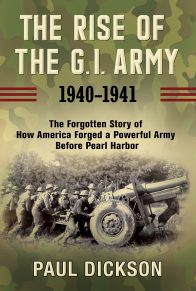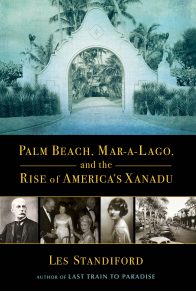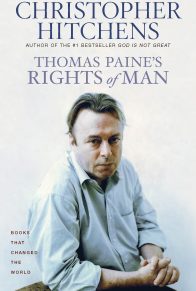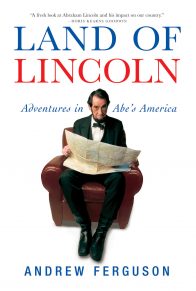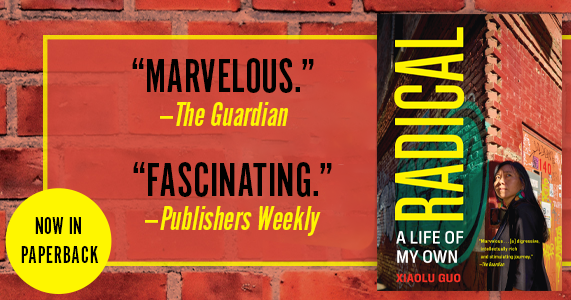Praise for Architects of an American Landscape:
Winner of the 2022 Victorian Society in America Book Award
Finalist for the Marfield Prize
“Architects of an American Landscape, a readable, intelligently paced dual biography, is the literary equivalent of a rolling, Olmstedian greensward. By the final chapter, the reader fully appreciates the short, productive life of Richardson, whom Henry Adams, the intimate of senators and presidents, called ‘the only really big man I ever knew.’ The Olmsted material feels like a welcome bonus, with erudite retellings of his conservation work in the Yosemite Valley, his pioneering efforts in forestry management for the Vanderbilts’ Biltmore Estate in North Carolina, and of course his many collaborations with Richardson. . . . Perhaps the moral conveyed by this excellent dual biography is that a built aesthetic is doomed to crumble, while confected ‘natural’ landscapes will stand the test of time. That said, Mr. Howard makes a strong case that we should give Richardson’s prodigious accomplishments an educated second look.”—Alex Beam, Wall Street Journal
“Hugh Howard, in his smart and immensely readable Architects of an American Landscape, brings the friendship of Olmsted and Richardson to the foreground. In this double portrait, he allows Richardson, who is not a household name the way Olmsted is, to step slightly closer to the easel . . . Much of America is today touched by the legacy of Richardson, Olmsted, and their proteges. One part of that legacy is a long view of time. Architects, whether of landscapes or of buildings, are conscious of their obligation to a future they will never see. Howard underscores this quality, so rare today, and the affection and loyalty it elicits.”—Cullen Murphy, Air Mail
“Hugh Howard gets it marvelously right in Architects of an American Landscape, his joint biography of two Gilded Age luminaries. Both men are strikingly important in our nation’s cultural history, and the author nails his pairing of the two with solid scholarship and graceful, vivid writing . . . Superb.”—Washington Independent Review of Books
“Hugh Howard examines the lives of two early titans of American design: Frederick Law Olmsted and Henry Hobson Richardson . . . Offers insights into two classic American artists.”—Christian Science Monitor
“A work of serious scholarship. But it also felt like a paid vacation, traveling back to the horse and buggy days of the 19th century through the nation’s transformation into a fledgling world power . . . One of the book’s many pleasures is Hugh Howard’s talent for describing buildings from the ground up.”—Ralph Gardner, Jr., WAMC Northeast Public Radio
“The joint approach is deeply merited here, considering these two figures brought the American built landscape to a preeminence it had not previously known in their respective spheres of architecture and landscape design . . . The pair made a great difference in their respective fields, and their joint works remain a treasure.”—American Conservative
“In a vivid, deeply researched dual biography, Howard, a historian of architecture and design, pays homage to two men who exerted a huge influence on America’s homes, parks, and public spaces . . . As he did in Architecture’s Odd Couple, the author brings the architectural world to life on the page. An absorbing and informative history from a significant historian/biographer.”—Kirkus Reviews (starred review)
“A solid dual biography of pioneering landscape architect Frederick Law Olmsted and his influential friend, neighbor, and frequent collaborator, building architect Henry Hobson Richardson . . . Howard succeeds in shining a spotlight on the lesser-known Richardson and documenting Olmsted’s innovations as ‘a democratic designer of places that belonged to everyone.’ Architecture buffs will be engrossed.”—Publishers Weekly
“A well-researched dual biography, rich in historical context, presenting two gifted architects who as robust allies utterly transformed the look of American buildings and landscapes.”—Booklist
“Hugh Howard’s tandem biography of two American visionaries—the polymath Olmsted and the Rabelaisian Richardson—ranges across the intertwined fields of nineteenth century American design, innovative architecture, and the infant art of landscape preservation, ranging from the staid precincts of Boston, to the churning commercial metropolis of Chicago, to Washington, D.C. as it stood at the cusp of imperial grandeur, to the near-wilderness of California’s Yosemite. Erudite and propulsively readable, it vividly captures the driving energy of its principal subjects and their circle of remarkable friends as well as the larger creative spirit of the post-Civil War nation as it began to shape the physical fabric of America as we know it today.”—Fergus M. Bordewich, author of Congress at War: How Republican Reformers Fought the Civil War, defied Lincoln, Ended Slavery, and Remade America
“In this beautifully written book, Hugh Howard reveals how two brilliant American artists melded their creativity to reinvent America’s architecture and landscaping. The parks of Frederick Law Olmsted are rightly treasured, but it is wonderful to see the Falstaffian Henry Hobson Richardson again getting his due as one of the towering giants of American architecture. Richly detailed and filled with deft character sketches of nineteenth century celebrities, Architects of an American Landscape is a delight.”—Edward Achorn, author of Every Drop of Blood: The Momentous Second Inauguration of Abraham Lincoln
“Like a perfectly laced boot, Hugh Howard’s chapters alternate between these two giants of American architecture, until they come together in personal friendship and professional collaboration to produce some of the greatest buildings and natural spaces in our history.”—John Wilmerding, Sarofim Professor of American Art, emeritus, Princeton University
Praise for Architecture’s Odd Couple:
“Distinguished by clarity, narrative energy and evocative description . . . An appealing primer in 20th-century American architecture, with myriad insights into the vanity and interpersonal politics of the two men who dominated American architecture for a century.”—Washington Post
“This informative dual biography argues that despite their difference the two architects influenced each other’s work.”—New York Times Book Review
“Architecture’s Odd Couple satisfies an American need for gigantic personalities in adversarial postures . . . There [may] have been better books about Frank Lloyd Wright, but never a better account of Philip Johnson.”—Spectator
“Read Architecture’s Odd Couple for an introduction to Wright’s beautiful buildings, his spectacle of an ego, his architectural-political philosophy, and for his influence on Johnson—the younger, fame-hungry architect who ends up serving as Wright’s aperitif.”—Washington Free Beacon
“Howard’s prose is fluid, and he deftly explains technical terms without slowing the story. The result is narrative non-fiction of a high order, enlivened by anecdotes and quotations from two very outspoken and colorful characters.”—Publishers Weekly
“An in-depth portrait of two ‘grand men of American architecture’ . . . New light is shed on both architects in this absorbing, well-organized, delightfully told story.”—Kirkus Reviews
“Hugh Howard’s nimble narrative . . . is about the on-again off-again relationship between Wright and Philip Johnson, a pairing that a novelist couldn’t have improved upon . . . Howard moves fluidly from Wright to Johnson and back in chapters that alternate between key moments of intersection between the two men and their major works . . . A lively and insightful chapter of American architectural history.”—Buffalo News
“Howard, a noted historian and author of eleven architecture titles, paints an expert picture of the relationship, during which the architects challenged each other and ultimately produced some of the nation’s most enduring architectural works.”—Architectural Digest







